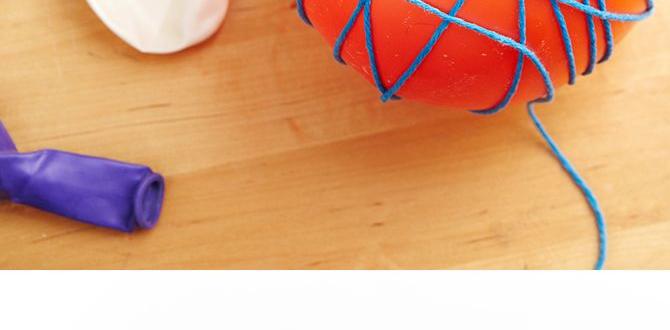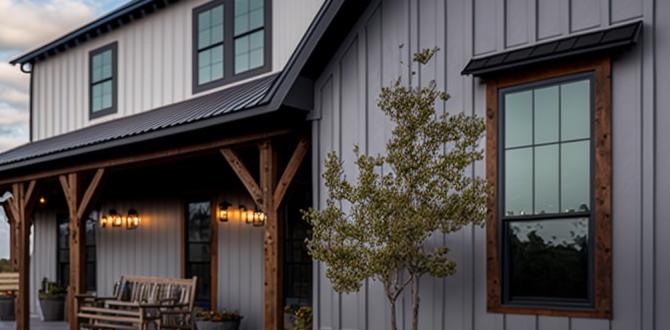Table of Contents
Cutting Curves With Bandsaw: Mastering The Art And Technique
Using a bandsaw to cut curves can be both fun and useful. It allows for smooth, intricate designs in wood and metal. Did you know that choosing the right blade is key? A narrower blade makes tighter curves easier. Practice is important too. Just think: cutting a beautiful spiral can turn a simple project into a stunning piece of art. With patience and the right techniques, anyone can master cutting curves and impress friends and family!
Understanding the Bandsaw
Explanation of bandsaw components and mechanics. Advantages of using a bandsaw for cutting curves.
A bandsaw is a neat tool with a long, thin blade that moves in a continuous loop. It has a table to hold your workpiece and guides to help keep the blade straight. Perfect for cutting curves, it lets your imagination run wild! Using a bandsaw means smoother cuts and less wasted wood, too. You can whip up amazing designs without breaking a sweat, or your back!
| Component | Function |
|---|---|
| Blade | Cuts through materials |
| Table | Supports your workpiece |
| Guides | Keeps the blade steady |
Who wouldn’t want an easier way to shape wood? Curves with a bandsaw bring your ideas to life! Plus, it’s so easy that even your pet goldfish might want to try it! Well… maybe not.
Preparing Your Material
Tips for selecting the right material for curved cuts. How to mark and measure for precision cutting.
Choosing the right material for curved cuts makes a big difference. Soft woods like pine are easy to shape. Hardwoods like oak provide strength but require more skill. Always check thickness.
Marking and measuring is key to precise cutting. Use a pencil for clear lines. A flexible measuring tape helps with curves. Always double-check your measurements.
- Use blueprints for complex shapes.
- Test on scrap wood first.
- Ensure the wood is free from knots.
What should I consider for cutting curves?
Think about your material’s flexibility and thickness. Be sure to use sharp blades for smoother cuts. Practice makes perfect!
Setting Up Your Bandsaw
Stepbystep instructions for adjusting bandsaw settings. Importance of blade tension and tracking.
Before you dive into cutting with your bandsaw, setting it up right is key! First, check the blade tension. It should be snug enough to avoid slipping but not so tight that it sounds like a guitar string ready to break. Next, adjust the blade tracking. Ensure the blade runs down the center of the wheels. A quick tip: if the blade wanders, it might as well be doing the cha-cha! Below is a simple checklist for setup:
| Step | Description |
|---|---|
| 1 | Check blade tension. |
| 2 | Adjust blade tracking. |
| 3 | Inspect blade condition. |
| 4 | Set the appropriate speed. |
Lastly, don’t forget to read the manual; it’s like having a treasure map for your bandsaw! Happy cutting!
Cutting Techniques for Curves
Best practices for maneuvering the bandsaw around curves. How to achieve smooth cuts and avoid splintering.
Using a bandsaw to cut curves can feel like a dance, where you must lead with your hands. First, remember to go slow! Quick moves can cause splintering. Use a blade that’s designed for curves; it should be narrower. This helps you turn without forcing it. If you hear odd noises, don’t ignore them. They’re usually just the bandsaw saying, “Hey, you’re cutting too fast!” Lastly, clean your cuts with sandpaper afterwards for a smoother finish. Trust me; your wood will thank you!
| Technique | Tip |
|---|---|
| Blade Selection | Use a narrow blade for tight curves. |
| Speed Control | Cut slow to prevent splintering. |
| Noise Awareness | Listen for strange sounds; they mean trouble! |
| Finishing Touch | Sandpaper makes those cuts feel smooth. |
Safety Precautions While Cutting Curves
Essential safety gear and equipment. Key safety tips specific to bandsaw operation.
Using a bandsaw can be fun, but safety is key! First, wear essential gear like safety goggles and hearing protection. These protect your eyes from flying debris and your ears from loud noise. Also, make sure to wear a snug-fitting shirt. Loose clothing can get caught. Always check the bandsaw for proper setup before you start.
Here are some key tips:
- Keep your hands away from the blade.
- Use a push stick for small pieces.
- Stay focused and do not rush.
- Turn off the machine when not in use.
What are essential safety precautions when using a bandsaw?
Before cutting, make sure to check the blade tension and alignment. This helps keep the blade steady. Always unplug the saw before changing the blade. Following these tips ensures a safer cutting experience.
Common Mistakes and Troubleshooting
Identifying frequent errors in curve cutting. Solutions and tips for correcting miscuts or blade issues.
Curve cutting can be tricky, and mistakes happen! One common error is pushing too hard on the wood. This can lead to miscuts that look like a rollercoaster ride instead of smooth curves. Another issue can be using the wrong blade. A dull blade is like trying to slice butter with a brick—it’s not going to work! Here are some tips to get you back on track:
| Common Mistake | Solution |
|---|---|
| Too much pressure | Let the blade do the work! |
| Dull blade | Change the blade regularly! |
Remember, practice makes perfect! So keep those hands steady, and don’t forget to laugh off your mishaps. You’ll be cutting curves like a pro in no time!
Finishing Touches After Cutting
Techniques for sanding and finishing curved edges. Recommended finishes for different materials used.
After slicing those beautiful curves, it’s time for the finishing touches! Sanding is essential to make those edges smooth. For easier handling, try using hand-held sanders or sanding blocks. They can make curves feel silky! Don’t forget different materials need different finishes. Wood loves a good polish, while metal might prefer a sparkly coat of paint.
| Material | Recommended Finish |
|---|---|
| Wood | Varnish or oil |
| Plastic | Paint or spray |
| Metal | Powder coat or sealant |
So grab your sandpaper and get ready to make those curves shine like a new toy! Remember, a little effort here can save you from sharp edges and tragic splinters later on.
Conclusion
In conclusion, cutting curves with a bandsaw is a fun and useful skill. You can create unique shapes in wood or other materials. Remember to choose the right blade and practice on scraps first. This way, you’ll gain confidence and improve your technique. For more tips, check out beginner woodworking guides or videos. Happy sawing!
FAQs
What Are The Essential Techniques For Accurately Cutting Intricate Curves Using A Bandsaw?
To cut intricate curves with a bandsaw, you should start with a sharp blade. Choose a blade that is narrow; this helps it turn easily. You also need to go slow and steady while cutting. Keep your hands safe by using push blocks. Finally, make sure to plan your cuts beforehand so you know where to go!
How Can The Selection Of Blade Type And Width Affect The Quality Of Curve Cuts On A Bandsaw?
Choosing the right blade type and width is important for making curve cuts on a bandsaw. A thinner blade can go around curves better than a wider one. Different blades are designed for different materials, so pick one that matches what you’re cutting. If you use the wrong blade, your cuts might not be smooth or clean. The right blade helps you cut more easily and accurately!
What Safety Precautions Should Be Taken When Cutting Curves With A Bandsaw To Prevent Accidents?
When using a bandsaw to cut curves, you should always wear safety goggles to protect your eyes. Keep your fingers away from the blade and use a push stick if needed. Make sure the table is clean and clutter-free. Always follow the machine’s instructions and ask for help if you’re unsure. Lastly, check the blade regularly to ensure it is in good condition.
How Can One Achieve A Smoother Finish On Curved Cuts Made With A Bandsaw?
To get a smooth finish on curved cuts with a bandsaw, you can follow a few tips. First, use a fine-toothed blade. This helps make cleaner cuts. Next, go slowly and let the saw do the work. Finally, you can sand the edges after cutting to make them even smoother.
What Are The Common Troubleshooting Tips For Handling Bandsaw Issues When Cutting Intricate Curves?
When cutting tricky curves with a bandsaw, there are some helpful tips to remember. First, make sure the blade is sharp. A dull blade can make cutting hard. Next, use a slow speed; it gives you better control. If the wood gets stuck, gently push it through without forcing. Finally, practice on scrap wood to build your skills before trying the real project.





